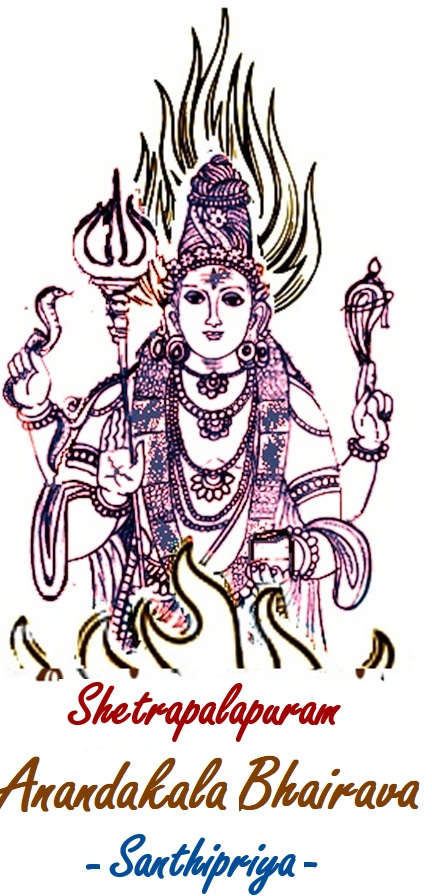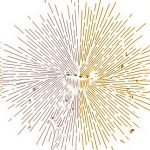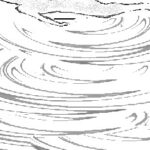
Temple history of Shetrapalapuram Lord Bhairava
Shetrapalapuram is a small hamlet in Kuttalam Taluk, eight km from Mayiladuthurai on way to Kumbakonam. A small, but divinely shrine for Lord Kala Bhairava in the name of Ananda Kala Bhairava can be seen here. Neither the origin, nor the history of Lord Bhairava here or how the worship commenced in this shrine is known; however, the glory of Lord Bhairava seated in this temple remains undisputed.
Contrary to fearsome looking Lord Bhairava, placid, ever smiling Lord Bhairava manifest in this small shrine; Kala Bhairava, a fierce form of Shiva is the archetype who rules time and period and worshiping him is believed to bring many benefits as he bestow boons to his devotees. The overall belief has been that those who offer prayers in this shrine by lighting the lamp in oil-filled bitter guard or pumpkin pieces, a unique practice which originated here and spread to other Bhairava temples, all obstacles from ones’ life vanishes, variety of illnesses gets healed, family conflicts gets automatically resolved and Lord Ananda Kala Bhairava grants boon to beget offspring to the childless couple. Devotees who want particular favors from Lord Bhairava perform a worship ritual that involves lighting oil lamps in pumpkin and bitter gourd for nine weeks- same day in each week.
Since several centuries people of this village have worshipped Lord Bhairava in the open space with no roof top above; he has been the guardian deity of the village. Therefore, the glory of Lord Bhairava in Shetrapalapuram remained unknown even to the locals. Only after a long period of time when some of the scholars, researchers and spiritual saints visited here, the glory of the Lord began to be realized and came to open. Subsequently some kind of roof top has been installed over the shrine to facilitate the devotees to offer worship even during rain and summer heat. The pooja is however not performed as per the Agama form of worship.
Kala Bhairava
Lord Bhairava is generally depicted as a terrifying figure with his divine vehicle dog at his feet, and carrying several weapons as Lord Bhairava is considered to be fierce manifestation of Lord Shiva. Besides, he is displayed holding a trident and a human head in his hand. While some say that the human head held by him is the severed head of Lord Brahma as Lord Bhairava in an act of anger severed the head of Lord Brahma at the command of Lord Shiva, others opine that it is a skull that symbolize that Lord Bhairava grants salvation to the dead souls.
In few other temples, especially in tantric ones, Lord Kala Bhairava is also seen naked, garland of skulls and coils of snakes hanging from the neck to knee both covering the naked body; his face with terrifying red eyes, and his vehicle, the dog, standing under his feet.
In contrast to such fierce form, one could see ever smiling, blissful, smiling Lord Bhairava standing without his divine vehicle dog in Shetrapalapuram.
In most of the temples, Lord Bhairava is placed inside a small carved out portion of the walls behind the sanctum sanctorum or he will be in separate sanctum in the form of guardian deity of the temple bestowing boons to his devotees who offer prayers to him. Before closing the temples, it is customary for the priest of the temple to ceremoniously keep the keys of the temple at the feet of Lord Bhairava and then take it back as Lord Bhairava is supposed to be the guardian of the temple.
Manifestation of Lord Kala Bhairava
Lord Bhairava manifested out of a feud between Lord Brahma and Lord Vishnu. Once there was a heated debate as to who amongst the divines-Lord Shiva, Lord Brahma and Lord Vishnu- were supreme. While both of them claimed superiority over the other, the four Vedas present there opined that Lord Shiva with his female energy was the supreme than others, but the view was not only ignored by Lord Brahma, but he also made disgraceful comments on Lord Shiva.
Lord Shiva who was watching their arguments from a distance got offended by the insulting comments of Lord Brahma and directed Lord Rudra standing by his side to immediately get the particular head of Lord Brahma which spoke ill of him, severed. Lord Rudra instantly took aggressive form of Lord Bhairava, went near Lord Brahma and severed his head in wink of an eye. Lord Brahma who lost one of his heads was shocked and realized his mistake; he instantly ran to Lord Shiva and apologized to him for the insulting comments which he made, which Lord Shiva accepted and pardoned him.
However, on the other side, Lord Bhairava incurred Brahmahaththi dosha for having severed the head of a brahmin, even though, the act was not that of his; he had only acted at the command of his master Lord Shiva. Though Lord Bhairava was also a divine, incurring the Brahmahaththi Dosha became inevitable as divine law spares none, whether they were human or divine and sin accrued out of it could be absolved only by undertaking some kind of penance. The entire events were happening to the fixed drama staged by Parabrahman in the universe for certain reasons.
God Brahma loses one of his heads
The Puranas contain inconsistencies regarding the number of heads which Lord Brahma originally possessed. One Puranic version states that when manifested, Lord Brahma had only one head. As he began the act of creation and looked in each of the four directions to create creatures, new heads appeared, each facing one direction, thus totalling to four heads. Each one of the heads began reciting one of the four Vedas. Thus, Brahma’s four heads represented not only the four directions, but also four Vedas namely Rig, Yajur, Sama and Atharva. The head severed by Lord Bhairava was one amongst them.
According to a different other version, Lord Brahma created a woman named Shatrupa to help him during the process of creation. She was so charming that Lord Brahma’s eyes refused to die down from gazing over her body wherever she went. She once observed that Lord Brahma’s eyes were illegally straying all over her body and they were sensual in nature; unable to avoid his seductive gaze of Lord Brahma, she ran to devaloga for safety. Embarrassed at her act, Lord Brahma’s sensuous eyes continued to follow her even as she ran to devaloga which was above earth. This resulted in Lord brahma getting another face looking at heaven above, thus, giving him five heads. In the meanwhile, Shatrupa who ran to devaloga rushed to Goddess Parvathi and sought protection from the straying eyes of Lord Brahma. Furious Goddess Parvathi cursed Lord Brahma to lose the head which tortured a hapless woman. Immediately Lord Brahma realized his mistake and pleaded for Goddess Parvathi’s forgiveness. Therefore, Lord Bhairava was destined to pluck out the fifth head of God Brahma, to leave him with only four heads. Why did God Brahma lose one of the heads at the hands of Lord Bhairava?
Why was Kal Bhairav created?
According to the highest level of spiritual pedagogy, when Parabrahman created the universe, initially three prime divines were created from whom several divines as well as semi- and semi-divines manifested in order to carry out specific acts in the universe to strengthen and spread the ideals of divine philosophy in the form of divine plays for the benefit of the mankind. In most of the dramas, thus slated to be enacted, the roles of Shiva-Sakthi were crucial, especially that of Goddess Parvathi who had to manifest in human form on many occasions.
Goddess Parvathi was destined to manifest in different places, in different forms and with different divine stature and settle in shrines or temples even in remote places which were established on earth. In far remote areas she needed protection from other jealous divine elements. Therefore, it became imperative for Lord Shiva to create a warlord guardian deity, with fierce look to not only protect her but also to stand stand guard in the shrines she settled. The shadow manifestation of Lord Shiva thus settled in separate sanctum in the temples where Goddess Parvathi settled. While releasing two shadow manifestations of self in the name of Bhairava and Kal Bhairav, Lord Shiva said that those shadow emanations will liberate the souls of those dead as well and give them salvation on behalf of Lord Siva.
In the broader divine drama whose parts are many and released in bits and parts by Parabrahman during destined time, Lord Brahma was destined to get one of his heads severed and sent to devaloga for salvation as it incurred sin of torturing a hapless woman; remember the extra heads over the body in Lord Brahma too were shadow heads of Lord Brahma created for several other purposes. In light of above background Lord Bhairava’s manifestation became important and need of that hour.
Lord Bhairava absolved of the sin
Now back to the main story. Bhairava was afflicted with the Brahmahatti dosha as he severed the head of Lord Brahma. Once afflicted with the said dosha, his trident and other weapons disappeared instantly. Only Brahma’s severed fifth head instantly transformed into a skull and stuck to his hand. When Lord Bhairava sought the advice of Lord Shiva on how to get rid of Brahmahaththi Dosha and the skull struck to his hand, Lord Shiva explained that since Lord Bhairava had afflicted Brahmahaththi dosha on account of severing the head of a Lord Brahma, the creator of the four Vedas, Lord Bhairava should travel around the world seeking alms carrying the skull struck to his hands. Once he circumambulate the universe and reach Kashi, the sacred place, the skull will automatically fall down to relieve part of the sins acquired by Lord Bhairava. However, the sins will not get fully absolved in Kashi and Lord Bhairava will have to further continue his journey around the world- a second journey- with a mendicant pot in hand seeking blood as alms to get the remaining sins absolved. He has to get the potful of blood from willing donors and not to be coerced and taken.
Once Lord Shiva said so, another fierce looking female appeared there. Lord Shiva cautioned Lord Bhairav that the female will keep chasing him as he run around the universe, and once Lord Bhairava reached Kashi, she will disappear as she had no mandate to enter Kashi. Upon taking the advice seriously, Lord Bhairava began his journey and once he entered Kashi after circumambulate the universe, the doshas afflicted by him ended. Lord Bhairava was absolved of the Brahmahaththi Dosha. Once he entered Kashi, both Lord Shiva and Goddess Parvathi appeared before him in the form of Lord Kasi Visvanatha and Goddess Visalakshi. Thus, Kashi attained the most sacred place where when the relatives of the dead souls came and offered prayers, the souls begot salvation by the grace of Lord Shiva. Lord Bhairava was annointed the position of guardian deity of Benares called Kasi since then.
History of the Shetrapalapuram temple
The temple history of Shetrapalapuram is quite different to others. Rather, the temple story is continuation of Lord Kala Bhairava’s entry into Kashi where the sins afflicted by him were only partly absolved. The remaining half was meant to be removed much later in in Shetrapalapuram where he penanced. As earlier instructed by Lord Shiva, after the skull fell from his hands, Lord Bhairava commenced his journey carrying a mendicant pot (Kamandal) seeking blood from those who would willingly give. Even after travelling to many places, he could not get even a single drop of blood. On way in southern part of India, when he stayed in Thiruvalanshuzhi where a temple exclusively dedicated to Lord Vinayaga exists. When Lord Bhairava met Lord Vinayaga in the temple, discussed his problem and sought his advice on how to proceed further, Lord Vinayaga threw his trident on air. The trident went and fell in Shetrapalapuram.
Lord Vinayaga advised Lord Bhairava to go to that place, stay in penance seeking the grace of Lord Mahavishnu to get potful of blood to get absolved of the sin accrued on account of Brahmahaththi dosha. Lord Bhairava reached Shetrapalapuram and sat in penance seeking the grace of Lord Vishnu who satisfied with the penance of Lord Bhairava appeared before him, cut one of his fingers and put few drops of blood in the mendicant pot. Instantly the Kamandal was fully filled with blood and Lord Vishnu disappeared; the remaining sins of Lord Bhairava on account of brahmahaththi dosha too ended. Lord Bhairava then took bath in the nearby water tank which came to be known as ‘Soola Theertham’ meaning ‘water bed born out of trident’. Lord Vinayaka too appeared before Lord Bhairava and blessed him stating that ‘Shetrapalapuram will have higher sacredness than even Kashi for the souls to get salvation. Those who come there and offered prayers to Lord Bhairava will be rid of many of the sins accrued in their life time’ .
Temple water tanks
Several water beds came up around the temple such as Kaveri Theertham, Ganesha Theertham, Chakra Theertham, Skanda Theertham and Soola Theertham. In view of the elevated sacredness of this place, divines like Lord Brahma, Celestial head like Lord Devendra, Navagrahas along with other Deva ganas, greatest Rishis and Saints too came and offered prayers to Lord Bhairava here. Centuries ago, the greatness of this place where Lord Bhairava manifested as Ananda Kala Bhairava remained unknown to many, as the shrine was in a remote and isolated village not accessible easily. But as time passed, the greatness of the shrine flowed by word-of-mouth stories and a small shrine was erected over the statue of Lord Bhairava by the villagers.
Lord Bhairava appears here as Ananda Kala Bhairava in standing posture holding Kabala, Trisul, Pasam called Noose and Drum in four hands and grant boons to those who worship him here. Kala Bhairava is known as Kshetrabalakar (Boy of the place) here. Normally Lord Bhairava is in aggressive and fierce posture, but in Shetrapalapuram temple he is placid, sober and graceful with smile. The shrine is facing west and houses Swetha Vinayaga in separate sanctum. The divine vehicle of Lord Bhairava- dog – is missing and instead Nandi, divine vehicle of Lord Shiva can be seen seated facing Lord Kala Bhairava, perhaps because Lord Bhairava is shadow form of Lord Shiva only. There is also a well inside the compound.
The philosophy behind lighting up lamps in oil filled bitter guard has been that life is also a mixture of sorrow like bitter guard which is also an essential part of food but which tastes like bitter. The cause of miseries may be many, some of which are due to the curse incurred for the sins committed by their forefathers or committed by their own. Even if they have been committed unknowingly, they haunt the families for generations. In order to get rid of obstacles in life when the devotees offer prayers by lighting up oil lamp of bitter guard, Lord Bhairava who is compassionate Lord frees them from the malefic effects of sin. The chart below mentions the specific mantras to be recited to the specific divine when one is afflicted by the malefic effects of the Navagrahas shown against each.






Great Sir…
Thank you for sharing your hard earned wisdom…. எமது பணிவான வணக்கங்கள்…. உங்கள் பணி சிறக்க பலர் நன்மை பெற எங்களது அன்பான வணக்கங்கள்…. உங்களால் பலர் எளிதாக பயன்பெறுவர், நலம் பெறுவர்
Thanks sharing valuable information. Even my native village is close by I did not know. This is useful. I pray lord bhairva to give you all the bless in this life and next.
Thank you sir
Dear Sri jayaraman,
Thank you for this wonderful writeup. This is badly needed. Our native village is Kshetrabalapuram. We have had the fortune of visiting the temple few times.
The temple needs a formal writeup and captured in various sites that reference Shiva Temples, South Indian Temples etc. given the historical significance of this temple. I understand Sri MahaPeriva had mentioned to one of his devotees this temple is even older than the one in Kashi.
Regards,
Bala Krishnamurthy
If possible you can ask some donors to print my article on the said temple in the form of a small booklet and distribute to devotees free of cost who visit there and perform archana or sell it at nominal price. The history of the temple will automatically get spread. The article can mention my name as author and I will give permission to the donor to use the article free of charge if they approach me in nrj1945@gmail.com.